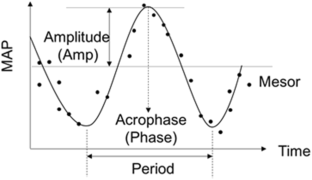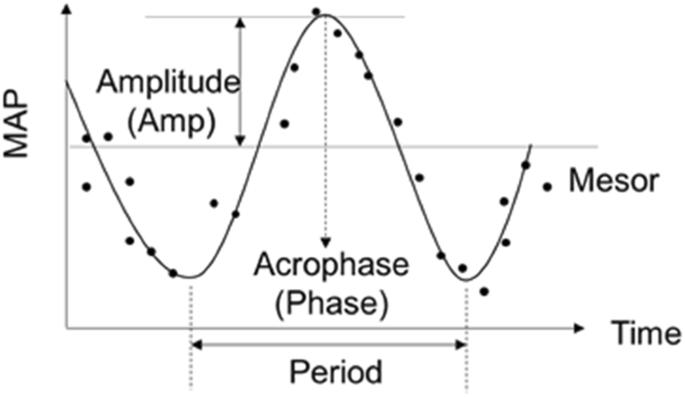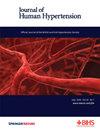从童年到成年早期的血压昼夜节律纵向研究
IF 2.7
4区 医学
Q2 PERIPHERAL VASCULAR DISEASE
引用次数: 0
摘要
血压昼夜节律的改变与心血管风险的关系越来越密切。然而,人们对血压昼夜节律随年龄的变化及其可能的社会人口、人体测量和遗传调节因素知之甚少。在 23 年的时间里,对 339 名欧洲裔美国人(EAs)和 293 名非洲裔美国人(AAs)进行了多达 16 次的 24 小时动态血压测量,首次测量时的平均年龄为 15 岁。血压昼夜节律以振幅和节律百分比(节律完整性的衡量标准)为指标,并使用傅立叶分析法进行计算。血压振幅和节律百分比随年龄和平均血压(BP mesor)的增加而增加。与 EA 患者相比,AA 患者的血压振幅和节律百分比更低。血压振幅和节律百分比也随脂肪含量(体重指数和腰围)的增加而降低。在夏季,AA 族人的血压振幅较低,而 AA 族人和 EA 族人的血压节律百分比较低。性别、身高、社会经济地位、体力活动和家族性高血压病史对血压振幅或节律率没有独立影响。本研究的结果表明,血压昼夜节律随年龄和儿童至青年期血压中位数的增加而增加,随脂肪含量的增加而减少,而 AAs 比 EAs 更有可能具有较低的昼夜节律。此外,我们还证明夏季与较低的血压昼夜节律性有关。本文章由计算机程序翻译,如有差异,请以英文原文为准。


A longitudinal study of blood pressure circadian rhythm from childhood to early adulthood
Altered blood pressure (BP) circadian rhythmicity has been increasingly linked with cardiovascular risk. However, little is known about BP circadian rhythm change with age and its possible sociodemographic, anthropometric, and genetic moderators. Twenty-four-hour ambulatory BP was measured up to 16 times over a 23-year period in 339 European Americans (EAs) and 293 African Americans (AAs), with an average age of 15 years at the initial visit. BP circadian rhythms were indexed by amplitude and percent rhythm (a measure of rhythm integrity) and calculated using Fourier analysis. BP amplitude and percent rhythm increased with age and average BP (BP mesor). AAs were more likely to have lower BP amplitude and percent rhythm than their EA counterparts. BP amplitude and percent rhythm also decreased with adiposity (BMI and waist circumference). The summer season was associated with lower BP amplitude in AAs and lower percent rhythm in both AAs and EAs. Sex, height, socioeconomic status, physical activity, and family history of essential hypertension did not have an independent impact on BP amplitude or percent rhythm. The results of the present study suggest that BP circadian rhythm increases with age and BP mesor from childhood to young adulthood, decreases with adiposity, and that AAs are more likely to have lower circadian rhythm than EAs. Furthermore, we demonstrated that the summer season is associated with lower BP rhythmicity.
求助全文
通过发布文献求助,成功后即可免费获取论文全文。
去求助
来源期刊

Journal of Human Hypertension
医学-外周血管病
CiteScore
5.20
自引率
3.70%
发文量
126
审稿时长
6-12 weeks
期刊介绍:
Journal of Human Hypertension is published monthly and is of interest to health care professionals who deal with hypertension (specialists, internists, primary care physicians) and public health workers. We believe that our patients benefit from robust scientific data that are based on well conducted clinical trials. We also believe that basic sciences are the foundations on which we build our knowledge of clinical conditions and their management. Towards this end, although we are primarily a clinical based journal, we also welcome suitable basic sciences studies that promote our understanding of human hypertension.
The journal aims to perform the dual role of increasing knowledge in the field of high blood pressure as well as improving the standard of care of patients. The editors will consider for publication all suitable papers dealing directly or indirectly with clinical aspects of hypertension, including but not limited to epidemiology, pathophysiology, therapeutics and basic sciences involving human subjects or tissues. We also consider papers from all specialties such as ophthalmology, cardiology, nephrology, obstetrics and stroke medicine that deal with the various aspects of hypertension and its complications.
 求助内容:
求助内容: 应助结果提醒方式:
应助结果提醒方式:


